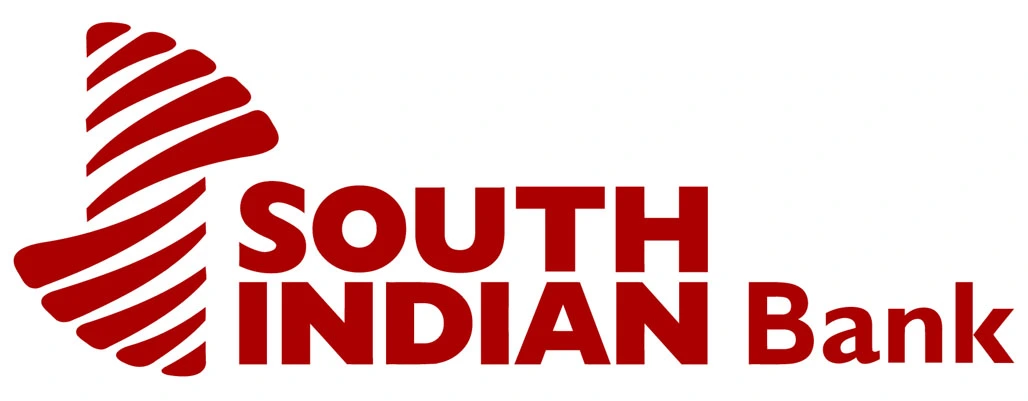Table of Contents
Introduction
Are you Googling for the detailed South Indian Bank Ltd Share Price Analysis? Here we present what exactly you are looking for, right from the bank’s achievements, how it operates, how its share price stands today, and most importantly, what lies ahead for investors. Whether you hold the stock or are considering an entry, the insights here aim to give you a clear, structured view of the bank’s prospects.
History of the bank
- Founded in 1929 in Thrissur, Kerala, The South Indian Bank Ltd. (SIB) began its operations with a modest paid-up capital of ₹22,000.
- Commenced operations on 29th January 1929 and was converted into a public limited company in August 1939.
- On 7 August 1946, SIB became the first private‐sector bank in Kerala to be part of the second schedule of the Reserve Bank of India.
- Over the decades, the bank grew via branch expansion, technological adoption through initiatives such as in-house automation, core banking etc. and enhanced product offerings.
Business model
- The bank is into retail banking services: savings accounts, term deposits, personal loans, home loans, gold loans, credit/debit cards, mobile/internet banking.
- It also provides wholesale & corporate banking: working capital finance, structured credit, project finance, foreign exchange & treasury operations.
- An integral part of the model is leveraging technology and digital-channels through mobile apps, internet banking, online deposit/loan products to bring down cost, expand reach and improve customer experience.
- Liability side: mobilisation of deposits (CASA, term deposits) to fund advances; Asset side: focus on credit growth while managing asset quality.
- Fee income, third-party distribution (mutual funds, insurance) supplement interest income.
Leadership, branding and trust
- Leadership: Headed by a board and professional management, the bank focuses on governance, customer service and technology.
- Branding: SIB positions itself as a trusted regional bank with a national presence, concentrating on customer-centricity, technological readiness and legacy since 1929.
- Trust: Having catered to multiple generations of customers in South India and beyond, the bank enjoys goodwill, though it still faces the same regulatory/credit risks as any other bank.
Milestones and achievements
- Holds the distinction of being the first private sector bank in Kerala to become a Scheduled Bank in 1946 and to receive RBI licence under Section 22 of Banking Regulation Act (1957).
- SIB, in November 1992, became the first private sector bank in Kerala to open a NRI branch. Within a year, i.e. in June 1993, it also became the first bank to start an overseas Branch exclusively for export/import business .
- 100 % Core Banking Solution implementation in March 2007.
- For FY 2024-25, the bank reported its highest ever net profit ( ₹1,302.88 crore) and business size of ₹1,95,104.12 crore.
- Regular innovation: digital-first products (e.g., online FD/loan), modern branch delivery, improved RoA/ROE in recent years.
Competitors in the banking industry
There is intense competition in the banking sector in India. Key peers for SIB include:
- HDFC Bank Ltd., ICICI Bank Ltd., State Bank of India – larger private / public banks with pan-India presence.
- Regional/smaller private banks such as CSB Bank Ltd., Tamilnad Mercantile Bank Ltd., Karnataka Bank Ltd. – which vie for similar customer segments.
- Niche players offering specialised lending, or non-bank financial companies (NBFCs) pose a threat to complementing banks.
South Indian Bank Ltd’s share price, market capitalisation and related details
Here is a snapshot of key market metrics for the share, forming an important part of your South Indian Bank Ltd Share Price Analysis:
| Metric | Value |
| Latest share price | ₹38.11 (as on 24 Oct 2025) |
| 52-week low / high | ₹22.27 / ₹40.30 |
| Market capitalisation | ₹9,964 crore |
| P/E ratio (approx.) | 7.38 |
| P/B ratio (approx.) | 0.94 |
| Dividend yield | 1% (low) |
As of 27th October 2025, SIB’s stock surged by 53.49% in the past 6 months. To add on the share price has also increased by 36% in the past 30 days (as of 27th October morning session)
To sum it up, the stock is trading at a relatively modest valuation compared to many larger banks, albeit with higher risk attached given its size and market positioning. This constitutes a key facet of the South Indian Bank Ltd Share Price Analysis.
Financial performance overview
- In Q2 FY26, i.e. second quarter ended September 30 of the current fiscal year, South Indian Bank announced a strong financial result, an 8% rise in net profit to ₹351 crore
- During the second quarter, the bank’s overall income surged to ₹2,92,278 lakh, the reason being a growth in interest income to ₹2,40,705 lakh.
- For FY 2024-25, SIB reported a net profit of ₹1,302.88 crore (+21.75% YoY) and business size ₹1,95,104.12 crore.
- ROE reached 12.90% and RoA 1.05% — both highest in many years for the bank.
- Asset quality: The bank has shown improvement in gross NPAs / net NPAs metrics (while detailed numbers are not always provided here).
- Liability growth: CASA (current & savings) and core deposits remain focus areas; advances (loans) growth is moderate but strengthening.
- Key risks: Contingent liabilities noted; the bank has a lower interest coverage ratio and slower sales growth historically.
Peer comparison
Here is a simplified peer-comparison table to frame SIB’s relative position:
| Bank | Market Cap (₹ crore) | P/E | P/B |
| South Indian Bank Ltd | 9,964 | 7.4 | 0.94 |
| HDFC Bank Ltd | 15,50,120 | 21.8 | — |
| ICICI Bank Ltd | 9,74,209 | 19.7 | — |
| State Bank of India | 8,41,325 | 11.5 | — |
From this, you can see that SIB is valued significantly lower on P/E and P/B than many of its larger peers — suggesting either undervaluation, higher risk, or both.
Challenges and risk management
Every “South Indian Bank Ltd Share Price Analysis” must account for risks. Key challenges include:
- Asset-quality risk: Any uptick in NPAs (non-performing assets) or provisioning requirements will make a dent on profitability.
- Competition & scale: When compared to much larger banks, SIB has lower scale; cost-income pressure and market share expansion may be tougher.
- Deposit & liability mix: Need to maintain a healthy CASA ratio; if deposit costs rise, margins could compress.
- Regulatory and macro-risk: Changes in interest rates, regulatory norms, and economic slow-down hit lending growth.
- Valuation trap: Though the share looks cheap, “cheap” may reflect structural inertia or weak prospects if the bank fails to execute.
The bank’s risk-management appears to be improving (better RoA/ROE, digital investments) but execution must continue to be monitored.
What’s Next for Investors?
For the investor focused on SIB, the central question in your South Indian Bank Ltd Share Price Analysis is: What lies ahead and how to interpret the current opportunity? Here are thoughts:
- Valuation upside: The stock trades at comparatively low multiples (P/E 7-8, P/B 0.94) which suggests potential upside if growth and asset quality improve.
- Growth trigger events: If SIB can accelerate advances growth, raise CASA ratio, and continue digital adoption, margins may expand and the market may re-rate the stock.
- Catalysts:– Further improvement in credit cost and NPA ratios. – Launch of new digital products or branches in under-penetrated markets. – M&A or strategic tie-ups could shift investor sentiment.
- Watch-points:– Sustained improvement in return ratios such as ROE and RoA – How deposit cost trends behave – The bank’s ability to raise capital, if needed – The macro-environment for banking (interest rates, regulatory shock)
- Scenario outlook: In a favourable scenario where SIB executes well, the share price may move towards the upper end of its 52-week range and perhaps beyond. In a weak scenario (slower growth, asset quality slip) the stock may languish or even correct.
For investors, SIB offers a mid-sized bank bet with upside possibility but also attendant risks. Your final decision should after taking into consideration risk tolerance, time-horizon and whether you are comfortable with the execution risk.
Key takeaways
- The “South Indian Bank Ltd Share Price Analysis” shows that SIB is a bank with a solid legacy, improving performance and modest valuation.
- The business model is conventional banking, enhanced by digital push and regional strength; however, competition and scale are constraints.
- Current valuations are attractive relative to peers, but the market may be discounting execution risk and structural limitations.
- For investors: this is a conditional opportunity — upside if SIB executes, but downside remains if it slips.
- Monitoring key metrics (asset quality, ROE/RoA, deposit growth, CASA ratio) is crucial to track whether the bank is unlocking its potential.
Parting Words
Curious to know how share price analysis is done by experts? It’s pretty simple when you learn that process from a reputed, trusted platform. Since 2017, Entri Finacademy, with a student base of over 9 million currently has grown to be the leading stock market courses training institution in the market. These courses are designed in such a way that even a beginner with absolutely no knowledge of stock markets can learn right from the basics to the advanced level. To add on, it’s not just about stock markets as Entri also delivers mutual fund and forex trading courses. To know more about Entri Finacademy’s courses, please click here.
Stock Market Training Reviewed & Monitored by SEBI Registered RA
Trusted, concepts to help you grow with confidence. Enroll now and learn to start investing the right way.
Know moreFrequently Asked Questions
What does “South Indian Bank Ltd Share Price Analysis” refer to?
It refers to a detailed evaluation of the share price of The South Indian Bank Ltd including its valuation, growth prospects, financial health, and risks– not just a number but what drives that number.
Is The South Indian Bank Ltd a good investment now?
It could be, provided the bank executes well. The valuations are modest, and improvement opportunities exist. But the investment comes with higher risk compared to the largest banks.
What are important valuation metrics for SIB?
The key metrics are: P/E (7.4), P/B (0.94), ROE (12.9%), RoA (1.05%). These help assess how the market values the bank relative to profits, book value and asset base.
Which are the major competitors of SIB?
SIB competes with bigger players such as HDFC Bank, ICICI Bank, State Bank of India and with regional banks like CSB Bank, Tamilnad Mercantile Bank, Karnataka Bank.
What are the major risks for SIB shareholders?
Major risks include asset quality deterioration (higher NPAs), slower-paced deposit growth or higher cost of deposits, regulatory changes, or inability to grow advances and scale effectively.
What could be potential catalysts for SIB’s share price to move up?
Improvement in NPAs/provisioning, stronger advances/deposit growth, digital product success, raising CASA ratio, and market re-rating of the bank.
How should I monitor the performance of The South Indian Bank Ltd?
Track its quarterly financials for NII (net interest income), net profit, NPA ratios, RoA/ROE trends, deposit growth and CASA ratio. Also watch regulatory changes and broader banking sector trends.













